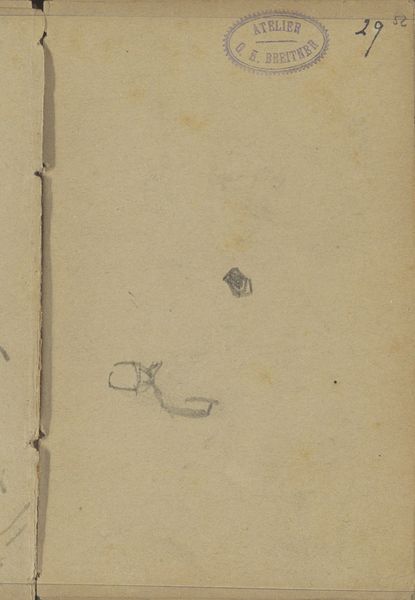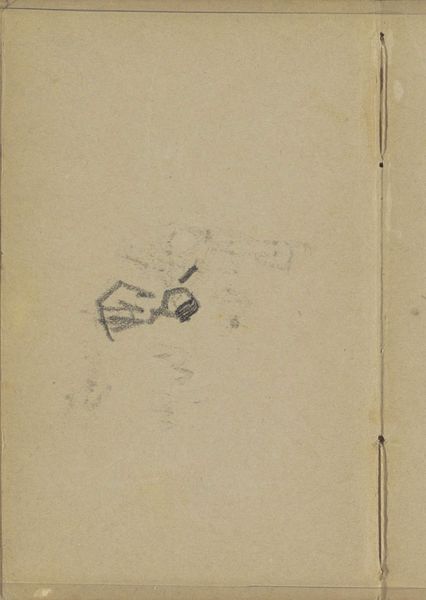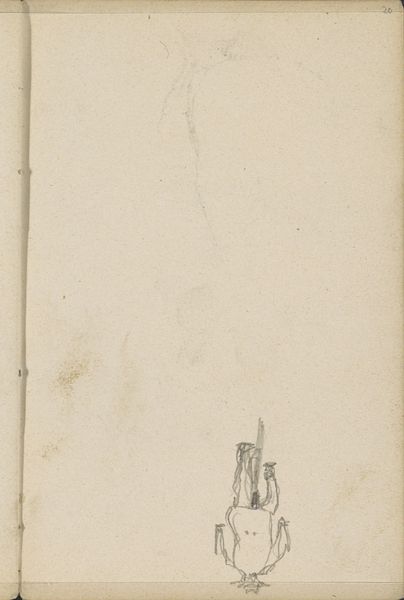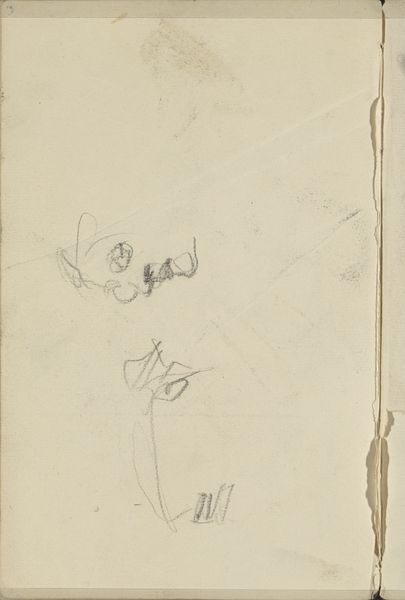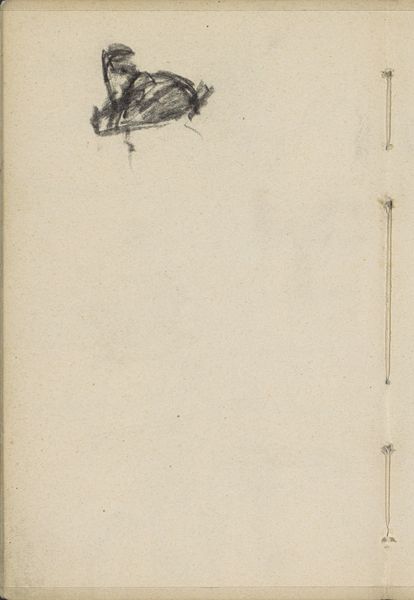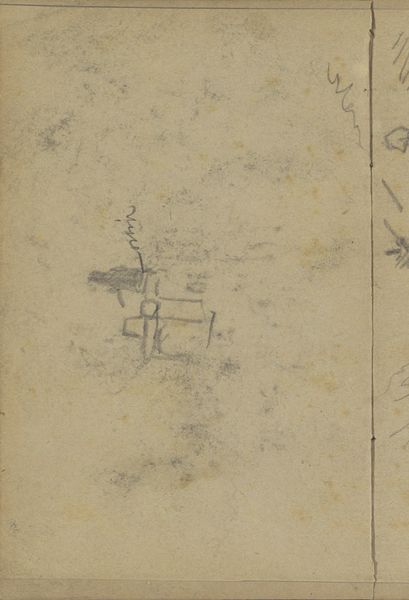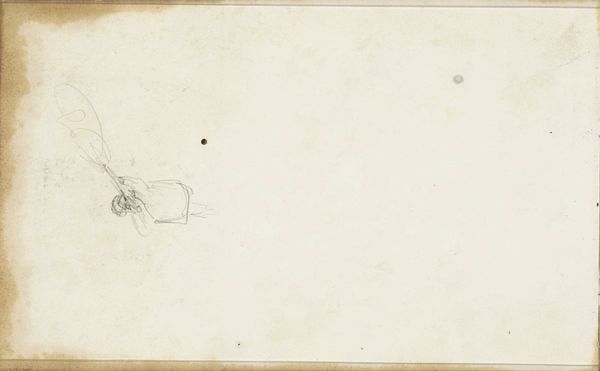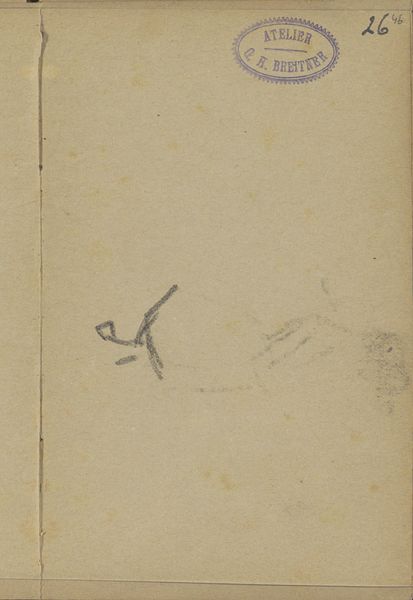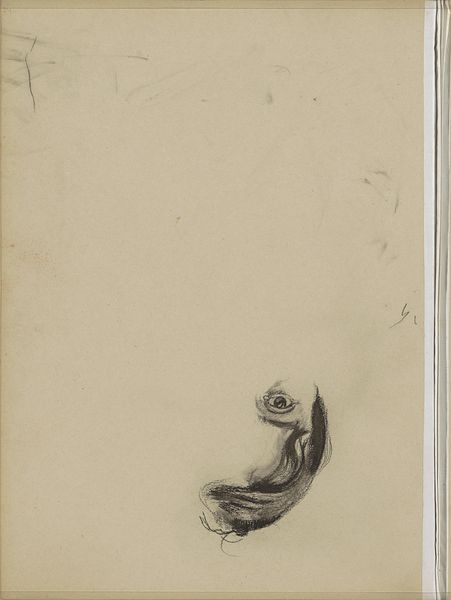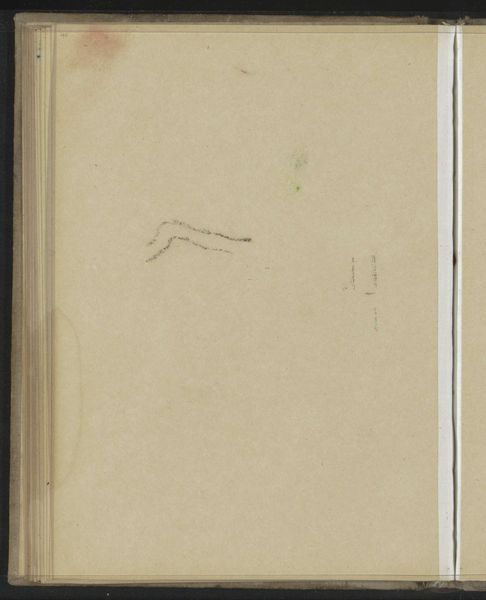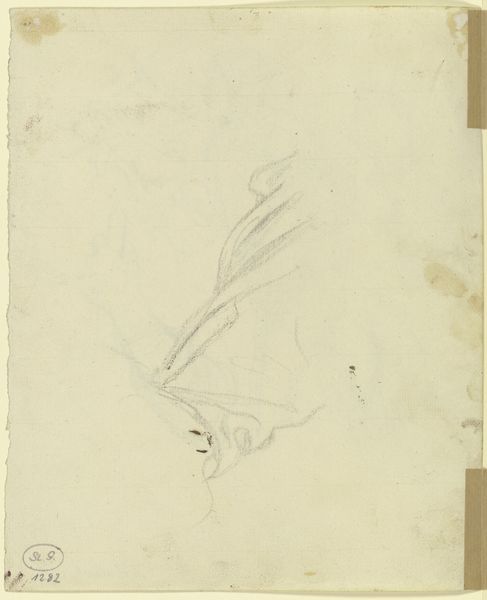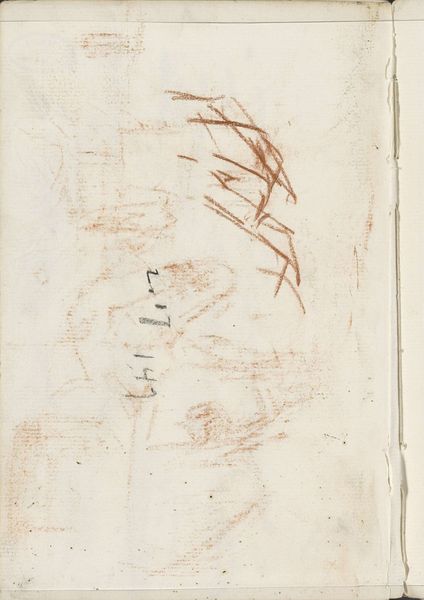
Copyright: Rijks Museum: Open Domain
Editor: This is "Study, possibly of an animal" by George Hendrik Breitner, created around 1893. It’s a drawing, using graphite and colored pencil on paper, and is held at the Rijksmuseum. It's really just a sketch, isn't it? What do you see in it? Curator: It's intriguing as an insight into Breitner's process. Look at the paper: a commonplace, gridded sheet. It suggests this wasn't meant as high art, but rather a functional artifact, a tool in the production of something else. The sketch itself, though seemingly casual, shows an engagement with materiality through mark-making. Editor: So, it's less about the animal itself and more about...Breitner experimenting with line and form? Curator: Exactly. And consider the social context. Breitner documented the everyday life of Amsterdam. This drawing, a fleeting impression captured on cheap paper, speaks to that ethos. It rejects the formal academic traditions in favor of direct engagement with the world around him. Is he examining class through his sketches of animals, seeing them as beasts of burden or objects of utility within the society? Editor: I hadn’t considered the class implications of depicting animals. So, even a seemingly simple drawing can reveal broader social and economic realities through its materials and process. Curator: Precisely. It pushes us to rethink the hierarchy between 'high art' and the everyday sketch, by emphasizing the labor and materials involved in its making. Editor: I see it differently now. Thanks! Curator: My pleasure. Considering art this way reveals the often-overlooked dimensions of production and consumption woven into every piece.
Comments
No comments
Be the first to comment and join the conversation on the ultimate creative platform.
